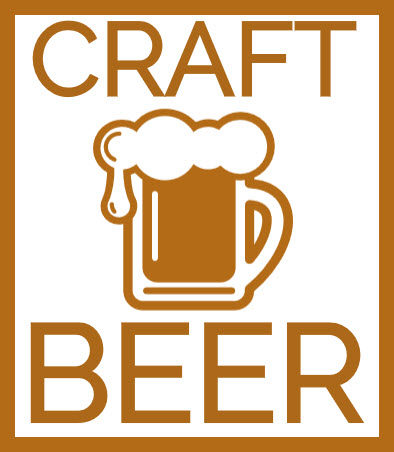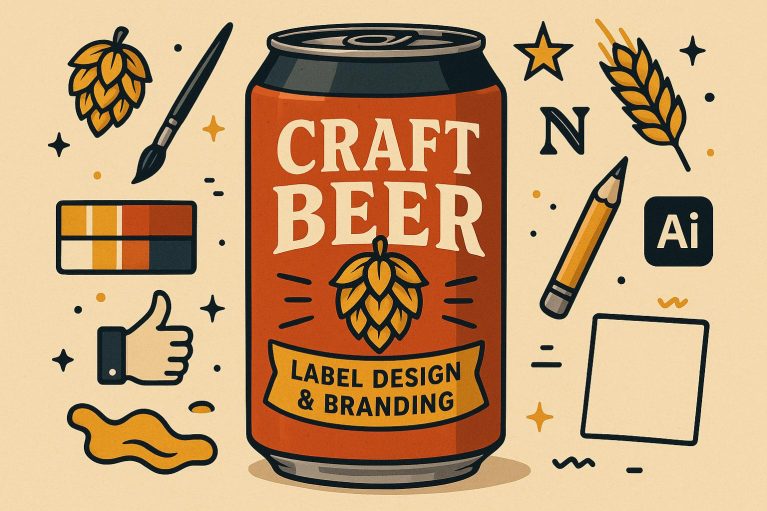The Evolution of Craft Beer Label Design
The craft beer industry has experienced significant growth over the past few decades, leading to an increased focus on creative and distinctive label design. Craft beer labels are not merely about aesthetics; they play a crucial role in branding and market differentiation. The shift from traditional beer packaging to more artistic label design reflects broader changes in consumer preferences and market dynamics.
The Importance of Branding in the Craft Beer Industry
In the highly competitive world of craft beer, branding becomes a cornerstone of success. With thousands of breweries operating globally, creating a unique and memorable brand identity can significantly impact a brewery’s success. The label serves as an introductory handshake between the consumer and the product. It communicates the brand’s ethos, origin, and flavor profile, often influencing the consumer’s purchasing decision.
Elements of a Successful Craft Beer Label
A compelling craft beer label combines several elements that together create a cohesive and attractive package:
Design and Artwork: Visual appeal is paramount. Many breweries collaborate with local artists to develop innovative and eye-catching designs that reflect the beer’s character and the brewery’s personality. This collaboration often results in labels that capture the imagination and intrigue of potential customers.
Typography: The choice of font can convey various messages about the beer’s style and the brewery’s image. Fonts need to be legible at a glance yet in harmony with the overall design. A carefully chosen typeface can suggest traditional craftsmanship or modern innovation, guiding the consumer’s perception from the first glance.
Color Schemes: Colors can signify the beer’s flavor profile or ingredients. A thoughtfully chosen palette distinguishes the product and remains true to branding guidelines. The strategic use of color can evoke certain emotions or associations, creating a sensory connection even before a single drop of beer is tasted.
Legal and Informational Text: Labels must comply with local regulations, including alcohol content, health warnings, and ingredient lists. Clear and concise information is essential. Balancing the need for regulatory compliance with the desire for artistic expression can be challenging but necessary for both transparency and consumer trust.
Trends in Craft Beer Label Design
Craft beer label design trends are constantly evolving, reflecting changes in consumer tastes and cultural trends. Some current trends include:
Minimalism: Clean and straightforward designs using negative space to make essential details pop. This trend prioritizes simplicity and can make a brand appear more accessible and modern.
Illustration: The use of hand-drawn or digital illustrations adds a personal touch, often resulting in unique labels that stand out on shelves. Illustrative designs can tell stories or depict whimsical, eye-catching scenes that engage consumers.
Storytelling: Incorporating local history or myths into label designs helps breweries connect deeply with their local communities. A narrative approach to label design can create an emotional bond between the product and the consumer, fostering a sense of loyalty and heritage.
The Role of Technology in Beer Labeling
Advancements in printing technology have made it possible for breweries to experiment with texture and special finishes, such as embossing or metallic inks. QR codes and augmented reality (AR) are also being integrated into labels, allowing consumers to access digital content and interactive experiences related to the beer, enhancing customer engagement and brand loyalty.
The integration of technology into label design opens up new possibilities for customer interaction. By scanning a QR code, consumers can discover the brewing process, the story behind the brewery, or even enjoy a virtual tasting experience. Such innovations not only make the beer-drinking experience more engaging but also reinforce the brand’s contemporary and interactive identity.
Case Studies: Innovative Craft Beer Labels
Several breweries have distinguished themselves through innovative label designs.
BrewDog: Known for its rebellious imagery, BrewDog often uses bold graphics to reflect its unconventional brand values. Their label designs tend to challenge traditional norms, appealing to customers who identify with the brand’s subversive and daring spirit.
The Alchemist: With intricate labels designed by artist Dan Blakeslee, The Alchemist tells visual stories that impart a sense of mystery and artisan craftsmanship. Each label is a journey, inviting consumers to explore and unravel the narrative through detailed and evocative visuals.
Conclusion
The art of craft beer label design is integral to the modern beer industry, balancing creativity with strategic branding. As the market continues to expand, breweries that invest in thoughtful and forward-thinking label designs are more likely to capture the imagination and loyalty of consumers. In an era where customer experience and brand interaction are key, a well-designed label is more than just a wrapper—it’s an invitation to engage with the story behind the beer.
For those interested in learning more about effective branding strategies, resources such as Craft Beer and Brewing offer additional insights into this dynamic field.

